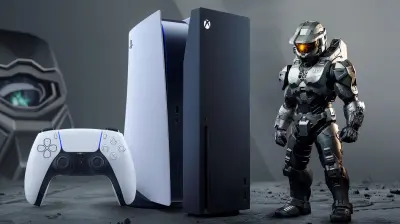An Ergonomic Guide to Achieving the Ultimate Gaming Setup
21 June 2025
Let’s be real — if you’re a gamer, you’ve probably spent hours perfecting your graphics settings, customizing keybinds, or tweaking your RGB lighting until it looks just... right. But how much time have you spent thinking about your posture? Your chair? Your screen height? Yep, we’re going there today. Welcome to the one guide every serious (and casual) gamer needs: A no-BS, ergonomic guide to achieving the ultimate gaming setup.
Forget the myths. Good ergonomics isn’t just for office workers. If you’re clocking in long hours grinding competitive matches, exploring open worlds, or pulling all-nighters with your squad, your body will thank you for getting this stuff right.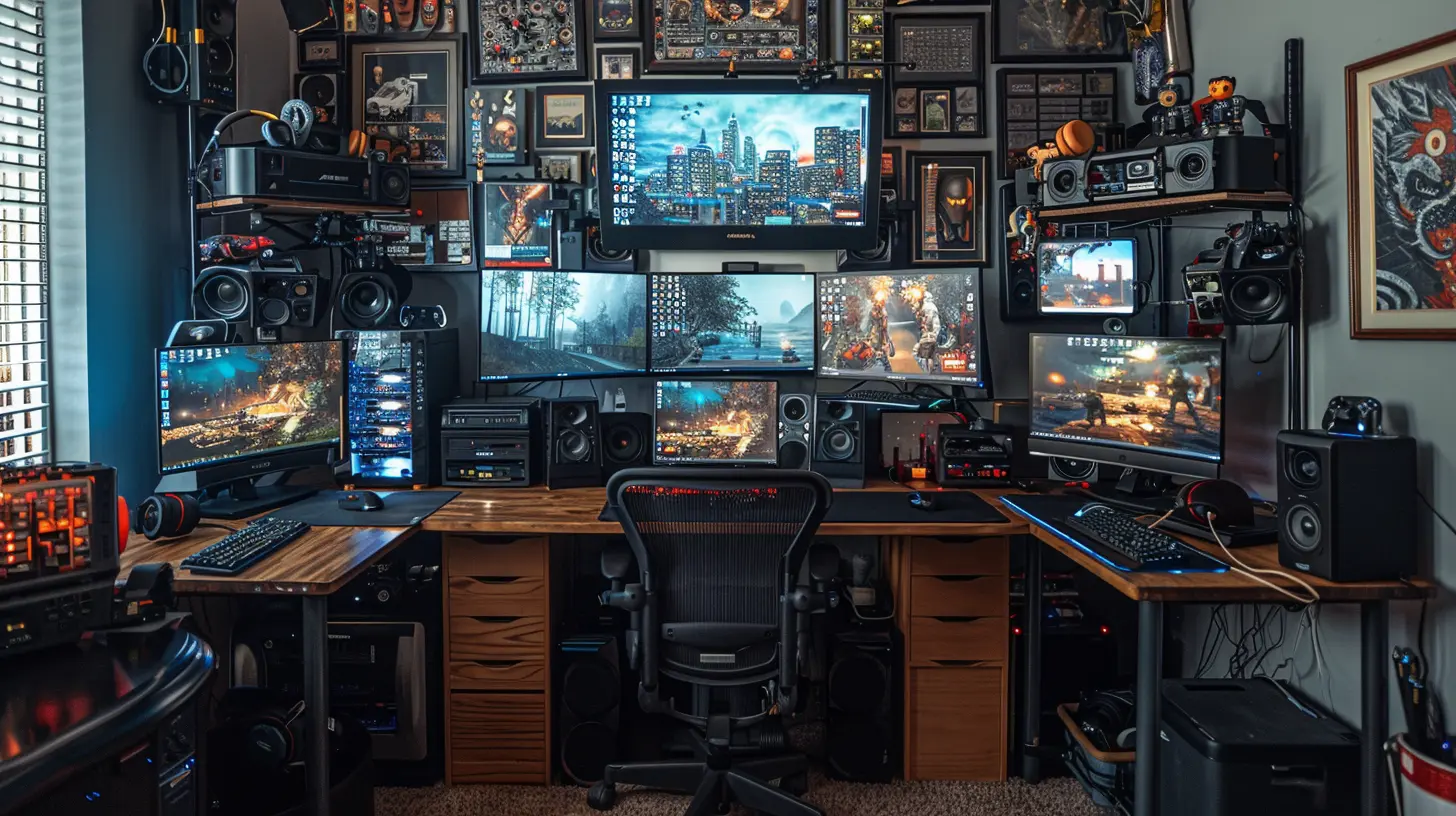
Why Ergonomics Matter for Gamers
Let’s start with the basics. Ergonomics is all about designing your space to fit you — not the other way around. Think of it like designing armor in an RPG. If it doesn’t fit well, you’re gonna take damage. In real life, that damage feels like back pain, neck strain, wrist aches, and even headaches.Your gaming setup plays a massive role in how your body feels after a long session. Whether you're a casual Fortnite drop-in or an elite Apex predator, poor ergonomics can lead to repetitive strain injuries, chronic pain, and even reduced performance.
Think about that. Your K/D ratio might actually thank you for adjusting your monitor angle.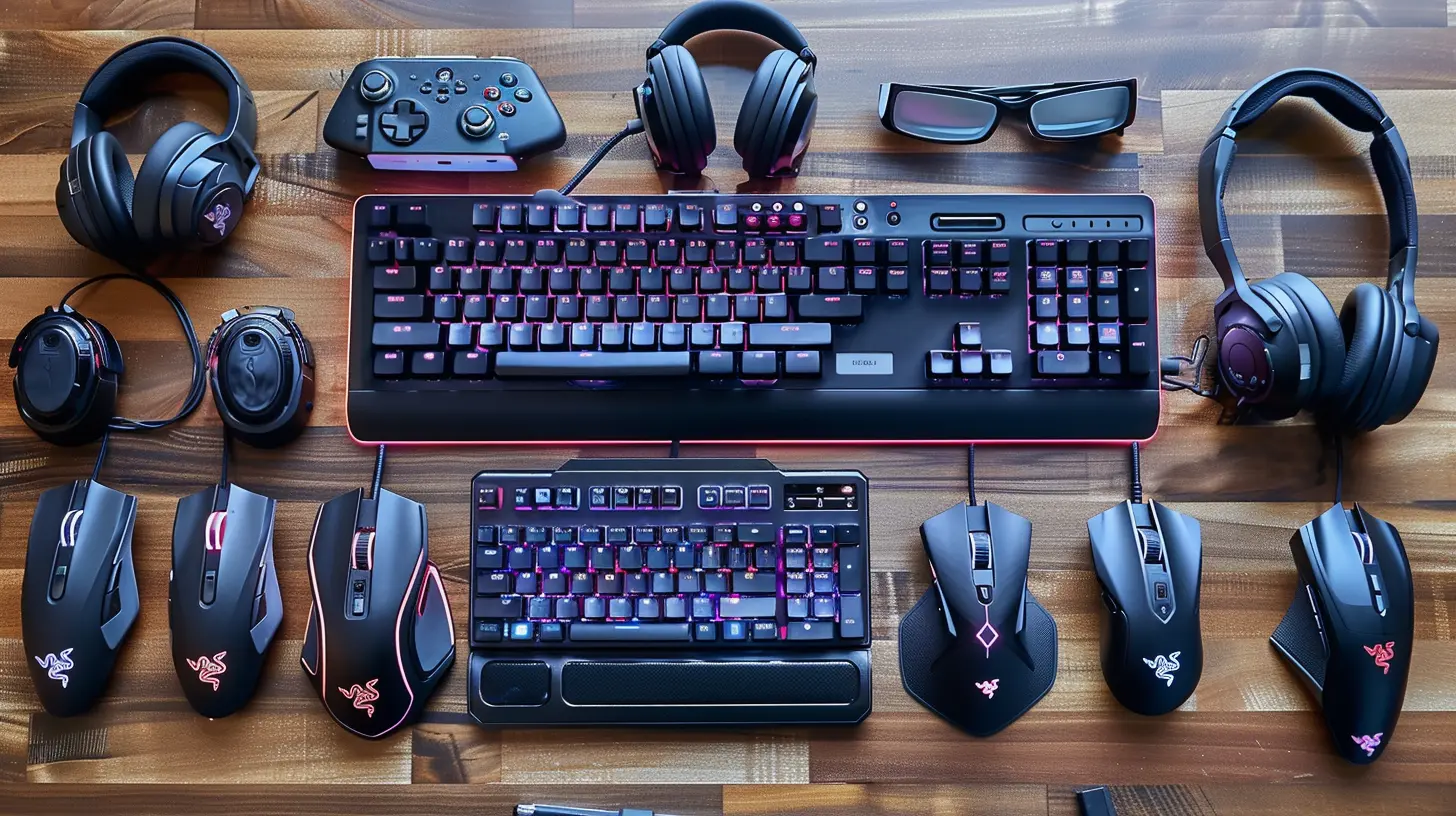
The Gaming Chair: Your Throne of Power
Alright, let's talk thrones. Your chair is the foundation of your entire setup. And no, your dining room chair isn’t cutting it.What Makes a Great Gaming Chair?
- Adjustability: Height, armrests, lumbar support, and recline angle should all be adjustable.- Lumbar Support: This isn’t a “nice to have” — it’s a must. Your lower back needs support to maintain natural spinal curvature.
- Seat Cushioning: It should be firm, not too soft. Think memory foam, not a bean bag.
- Breathable Material: You don’t want to feel like you’re sitting on a furnace. Mesh or high-quality PU leather work well.
If a full-blown racing-style chair isn’t your vibe, high-end ergonomic office chairs like the Herman Miller Aeron or Secretlab’s TITAN Evo series are excellent options.
Pro Tip:
When sitting, your feet should be flat on the floor, knees at a 90-degree angle, and your hips slightly above your knees. If your feet dangle, get a footrest. Yup, just like royalty.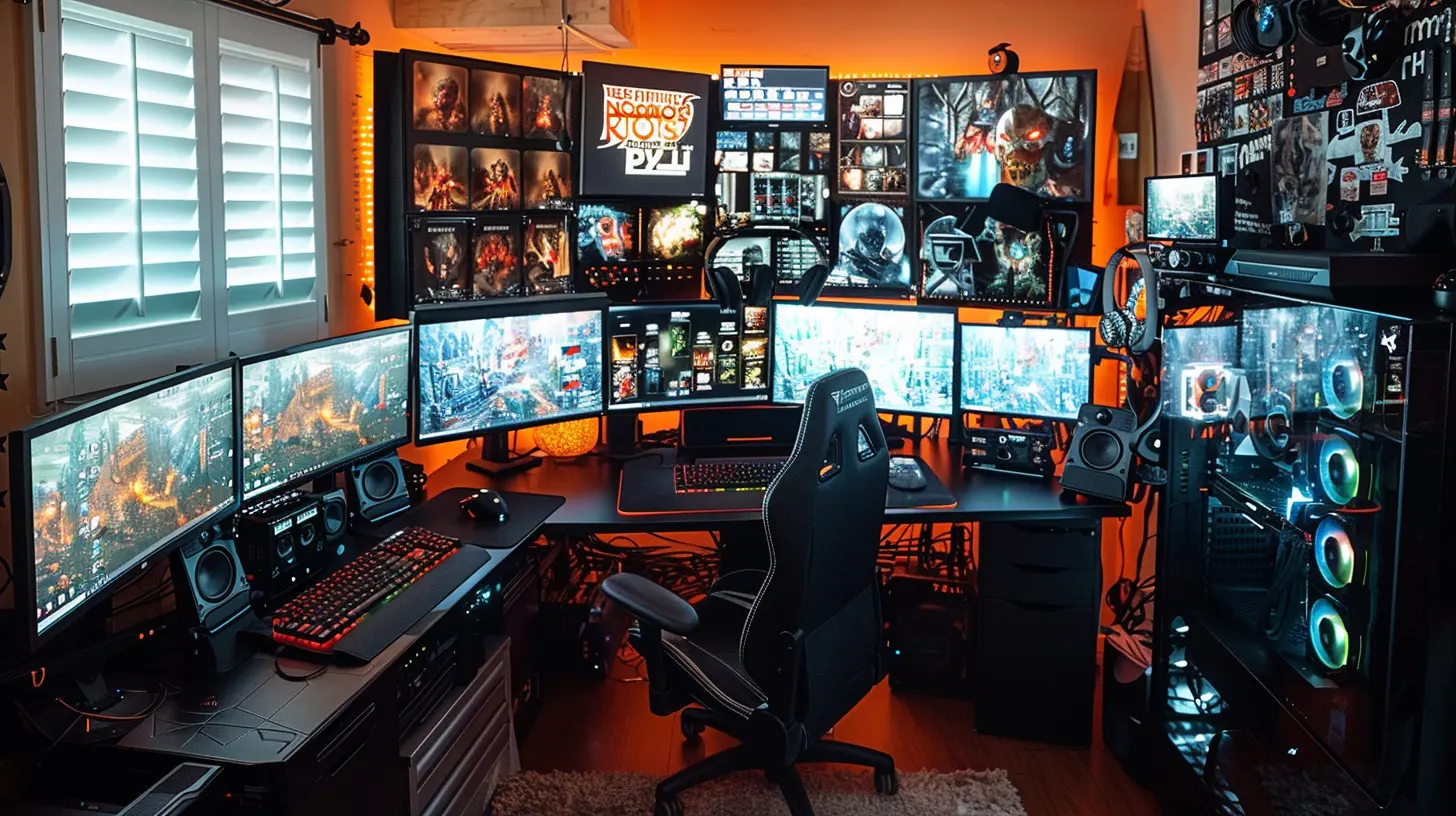
The Desk: Command Central
Now let’s look at where all the action happens — the desk. It’s more than just a platform for your gear; it’s part of your posture ecosystem.Key Desk Features
- Height Matters: Ideally, your elbows should be at a 90-degree angle when typing or using your mouse.- Space is Gold: You need enough room for your keyboard, mouse, and maybe a snack (because we’re being honest, right?).
- Sturdy Surface: Wobbly desks are a no-go, especially when you're in a clutch moment and your mouse slips during that headshot.
Standing desks or adjustable desks are great if you like to alternate sitting and standing. Just don’t forget the anti-fatigue mat if you’re standing for extended periods.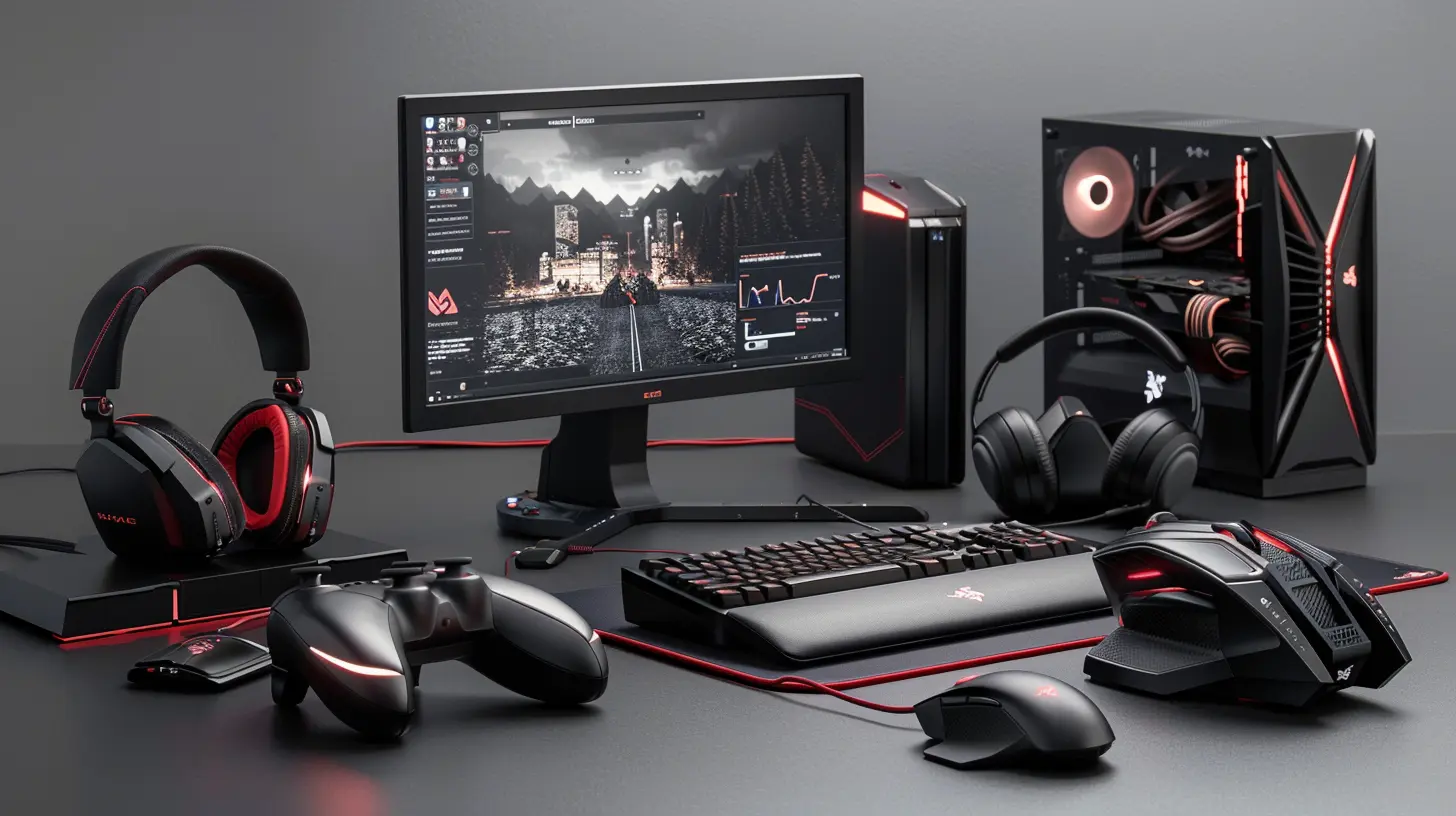
Monitor Placement: Eye-Level is Key
Your screen’s placement is one of the most overlooked parts of an ergonomic setup. But get this wrong, and you’re setting yourself up for some serious neck strain.Ideal Monitor Setup:
- Top of the Monitor at Eye-Level: Your eyes should line up with the top third of the screen.- Distance Matters: Keep it about 20–30 inches from your eyes, roughly an arm’s length.
- Dual Screens?: Center the primary screen directly in front of you. If both are equal use, angle them inward slightly to reduce head-turning.
Also, consider getting a monitor arm. They’re lifesavers for adjusting height and distance with ease — plus, they free up desk space for other gear.
Keyboard and Mouse: Your Weapons of Choice
If your chair is your throne, your keyboard and mouse are your weapons. And poor choice of weaponry? That’s a good way to lose a battle.Keyboard Tips:
- Your keyboard should sit flat on your desk or with a very slight negative tilt (tilted away from you).- Wrists should float above the keys — no resting or bending.
Ergonomic keyboards might look weird, but they help keep your wrists and hands in a natural position. If you do a lot of typing in between raids, it’s worth a look.
Mouse Tips:
- Choose a mouse that fits your hand well — not too big, not too small.- Your fingers should rest comfortably across the buttons, and your palm shouldn't be strained.
- Use a mouse pad with wrist support or a large surface area.
Consider vertical mice if you experience wrist or arm pain — they reduce pronation and feel super natural once you adapt.
Lighting: Save Your Eyes, Enhance Ambience
You might think RGB lights are just for looks (and hey, they’re cool), but proper lighting actually plays a huge role in reducing eye strain.Optimal Lighting Setup:
- Ambient Lighting: Avoid gaming in pitch-black rooms. Use soft, room-filling light behind or around your setup.- Bias Lighting: Place LED strips behind your monitor to reduce contrast and eye fatigue.
- Monitor Brightness: It should match the room’s brightness. Not too bright, not too dim.
Also, blue light filters or gaming glasses can help if your eyes feel tired during long sessions.
Cable Management: Yes, It Matters
This might sound minor, but trust me, tidy cables mean more than just good looks.- Clean cables reduce the chances of accidental yanks or disconnections during gameplay.
- Helps keep your desk clutter-free, which can actually boost your focus.
- Use zip ties, Velcro straps, or cable channels. You’ll thank yourself later.
A neat setup feels like a well-oiled machine. You wouldn’t take your ride into battle with wires dragging, would you?
Audio Gear: Ergonomics for the Ears
If you’re wearing a headset for hours, bad ergonomics can sneak up on your ears, jaw, and even your neck.Key Tips:
- Get a lightweight headset with adjustable bands and cushy ear pads.- Consider using an external mic with open-back headphones for longer sessions.
- Don't crank your volume. Your ears are permanent, but your rank isn’t.
Get a headphone stand or hook too — your headset deserves a home, not a pile.
Breaks and Movement: The Real OP Buff
Even with the best setup, staying motionless for hours is not it. Your body needs movement, just like your character.How to Stay Loose:
- Take a 5–10 minute break every hour.- Stretch your arms, rotate your neck, touch your toes — whatever works.
- Simple exercises like wrist rolls, shoulder shrugs, and standing up can make a world of difference.
Gamers are athletes of the digital realm — treat your body accordingly.
Ergonomic Accessories That Are Worth It
Want to go full min-max with your setup? Here's a quick list of ergonomic add-ons that can give you that edge:- Wrist Rests: For mouse and keyboard.
- Monitor Arms: Adjustable and space-saving.
- Footrests: Keep your posture on point.
- Standing Desk Mats: If you’re using a height-adjustable desk.
- Chair Cushions: Boost comfort for long sessions.
Think of these like epic gear upgrades — optional, but game-changing.
Final Thoughts: Play Hard, Sit Smart
Gaming’s about fun, performance, and sometimes a little chaos. But pain? That shouldn't be part of the experience. Setting up an ergonomic-friendly space might take a bit of time (and yes, maybe some cash), but it’s the ultimate quality-of-life upgrade.And here’s the truth — a better setup doesn’t just make things more comfortable. It boosts your focus, sharpens your reaction time, and helps you stay in the game longer and stronger.
So, tweak your chair. Raise that monitor. Adjust your gear. Your future self — whether that's later tonight, or five years from now — will thank you for not sitting like a question mark for 6 hours straight.
Game on, and sit smart!
all images in this post were generated using AI tools
Category:
Gaming GearAuthor:

Aurora Sharpe
Discussion
rate this article
2 comments
Vincent Wilson
Great insights! A comfortable setup truly enhances the gaming experience. Thank you!
October 29, 2025 at 5:03 AM

Aurora Sharpe
Thank you! I'm glad you found the insights helpful. Happy gaming!
Ethan Matthews
Craft your realm, where comfort meets epic adventures!
June 23, 2025 at 2:50 AM

Aurora Sharpe
Thank you! Striking the perfect balance between comfort and adventure is key to an epic gaming experience. Happy gaming!
